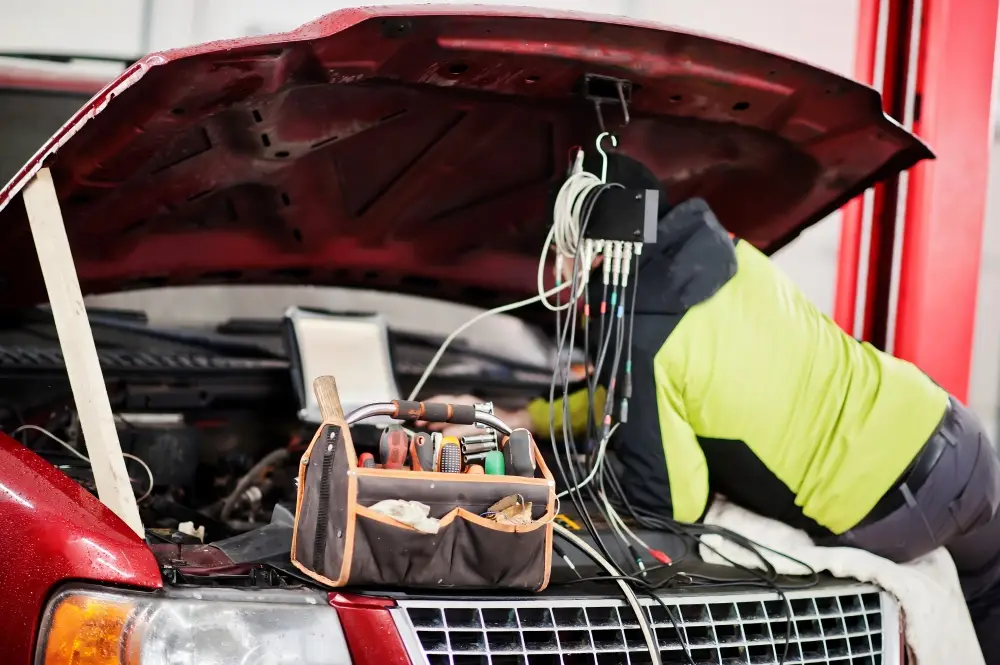Did you know that automotive connectors are the essential “bridges” in modern automotive electronic systems? They ensure stable communication and power transmission between all electronic components in a vehicle. Whether it’s the engine management system or advanced driver-assistance systems, the quality of the automotive connector directly impacts the safety and performance of the vehicle.
As a factory specializing in automotive connector manufacturing, we understand the importance of high-quality connectors. Today, let’s take a deep dive into the four core components of automotive connectors. This will help you, as a B2B client, better understand these key elements and make informed purchasing decisions. Whether you’re searching for an automotive electrical connector or a custom automotive connector, this article will offer valuable insights.
Automotive Connector Basics
First, what is an automotive connector? Simply put, automotive connectors are key components that join the electrical circuits inside vehicles, ensuring that signals and power are transmitted accurately throughout complex automotive systems. As vehicles become more electronic, the demand for automotive wiring connectors continues to grow.
These connectors are widely used in engine compartments, body electronics, infotainment systems, and more. Choosing the right connector can improve overall vehicle performance and extend product lifespan.
The Four Core Components of Automotive Connectors
1. Contacts – The Heart of Electrical Connection
Contacts are the most critical part of a connector, responsible for conducting current. They are usually made from highly conductive materials such as copper or phosphor bronze, ensuring low resistance and high reliability. Contacts are divided into male and female types, which fit together to create a stable electrical connection.
- Material Selection: High-performance materials ensure corrosion and wear resistance.
- Structural Design: Different vehicle models and applications require different types of contacts.
- Keywords: automotive connector contacts, high performance automotive connector
2. Housing – Robust Mechanical Protection and Positioning
The housing provides mechanical protection for the connector, shielding internal components from environmental damage. It must be tough and durable, with features such as waterproofing, dustproofing, and corrosion resistance to ensure stable operation even in harsh environments.
- Materials: Typically made from high-strength plastics or metals.
- Protection Rating: Waterproof automotive connector housings that meet IP67 or higher standards are especially popular.
- Keywords: automotive connector housing, waterproof automotive connector
3. Insulator – Ensuring Safe and Stable Electrical Insulation
The insulator’s main role is to separate the contacts, preventing short circuits and leakage. It ensures that each contact works independently, safeguarding the connector’s overall electrical safety.
- Material Properties: Resistant to high temperatures and chemicals.
- Manufacturing Requirements: High-precision molds ensure the insulator fits perfectly with the contacts.
- Keywords: automotive connector insulator, automotive electrical insulation
4. Accessories – Enhancing Performance and Installation Convenience
Accessories include seals, retaining rings, positioning pins, and more. Though small, these components greatly improve the connector’s performance and installation efficiency.
- Seals: Prevent moisture ingress and enhance the connector’s protection level.
- Retaining Rings and Positioning Pins: Ensure the connector is firmly installed and prevent loosening.
- Keywords: automotive connector accessories, automotive connector seals
How the Four Core Components Work Together to Ensure High Performance
These four core components complement each other, collectively ensuring the connector’s conductivity, mechanical strength, and environmental adaptability. For example, high-quality contacts guarantee stable current transmission, while robust housings and sealing accessories ensure the connector performs reliably even in rain, snow, or dusty conditions.
Consider this: a connector featuring high-performance contacts and a waterproof automotive connector housing can effectively prevent circuit failures caused by poor contact, greatly enhancing a vehicle’s reliability.
Conclusion & Client Call-to-Action
The four core components of automotive connectors—contacts, housing, insulator, and accessories—form the foundation of high-performance connectors. Understanding their roles and features will help you make smarter purchasing decisions.
Our factory specializes in designing and manufacturing high-quality automotive connectors, committed to providing B2B clients with customized solutions. If you’d like to learn more about automotive wiring harness connectors, or if you need samples and technical support, please don’t hesitate to contact us. Let’s work together to create a safer, more reliable future for automotive electronics!
Through this article, you’ve gained essential knowledge about automotive connectors and discovered the key points for selecting quality connectors. Don’t wait—contact us today for a personalized quote!

